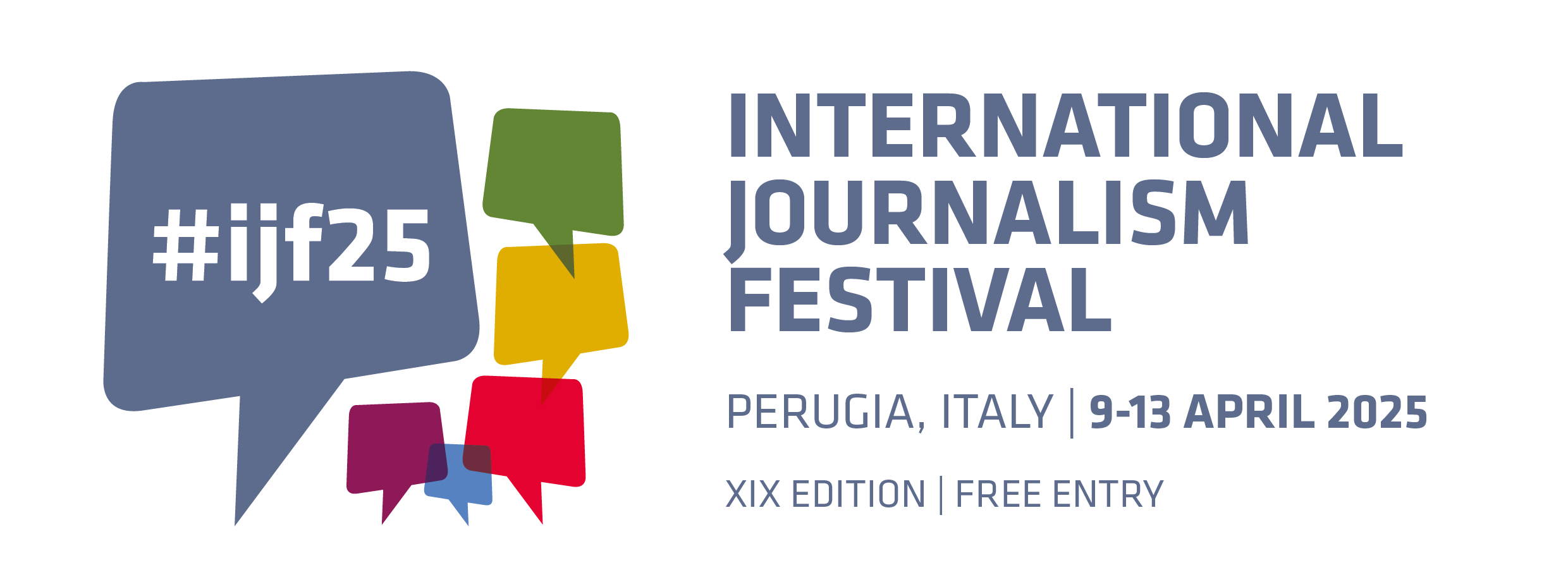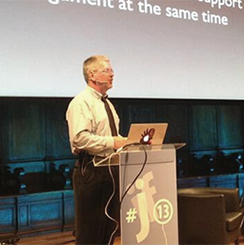
Journalism is evolving. Traditional media models are forced to, like a fish growing legs, take some cues from the new media and evolve. This is the concept Mathew Ingram, senior writer at GigaOm, addressed in his keynote speech, “Teaching the fish how to walk: five things old media can learn from new media”, at the 2013 International Journalism Festival in Perugia.
Ingram is an award-winning journalist who writes about social media, web culture and the overall evolution of media. Prior to his work with GigaOm, he worked as the first ever “communities editor” for The Globe and Mail, a national daily newspaper in Toronto, Canada.
So how do fish learn how to walk? Basically, by being more personal. Each of the ways traditional media can learn from new media highlighted by Ingram – how to be more open, how to give credit, how to be more human online, how to view news as a process and how to be more focused – revolve around the idea that a journalist needs to be engaged with their respective community. By accepting these techniques, skills that come naturally in new media, traditional media models can continue to evolve.
You told us the five things that traditional media can learn from new media, but why do you think it’s so hard for traditional media in the first place? What is the biggest challenge for them to adopt these?
The biggest challenge of all is not the tools. That’s why I focused the presentation on concepts – being open, human. You can teach anyone how to use Twitter, you can teach anyone how to use Google or you can teach anyone how to publish a blog. The hard part is not the tools or learning how to use them, it’s wanting to.
I had a huge challenge at the newspaper I used to work for just getting columnists and reporters to even want to engage with readers at all, in any way, because lots of them didn’t want to. Either because they’re just not that sort of person or because they just didn’t see it as having any value. Their job was just to process information and deliver it, so they didn’t see any value in that back and forth and engaging.
So that’s the hard part is convincing people that that is valuable. Once they see that then it’s easy to say “Oh you can do this and you can do this and you can use these tools.” But the hard part is getting them to even agree that they should do that. It’s easier now than it used to be, than it was, say, 5 years ago, but there’s still an entrenched culture in a lot of media organizations that says that is not valuable or it’s not valuable enough for you to worry about.
There’s an argument that personalization is overemphasized, that well written content wins over personalized content. What’s your defense for personalized content?
Not everything has to be personalized but let’s face it, human beings connect more with other human beings. For example I don’t necessarily develop an attachment to an organization like the New York Times and even if I do it’s because I’m attached to specific people who I admire or respect who are writing for the New York Times. My personal relationship with them is more important than my relationship with the entity. To me that’s just a natural human thing. It’s much more interesting for us to meet and talk with and get to know other individuals. So to the extent that you can personalize your relationship with someone around the content that you write, the stronger it becomes and the stronger that relationship becomes. When we were talking about Andrew Sullivan’s blog, that is the appeal of his models. It’s just him and people who are passionately interested in what he has to say, or passionately hate the things he has to say, but in some way their interested, and that relationship between those two groups is where all the power of that model comes from.
You starting working as the Globe’s first-ever communities editor. How did the responsibilities of that title change from when you started to what you would do in that position now?
When I started, I’m pretty sure I was the first sort of social media editor at a major newspaper in North America. So the New York Times didn’t have one the Wall Street Journal didn’t have one, I can’t think of a newspaper that had one. So we came up with the term “communities editor” because we wanted it to be about more than just the community, we wanted it to be about developing those relationships between writers and readers and we were prepared to use any tool.
In the early days it was very much about ‘what is Twitter?’ ; ‘How do you use it?’ ; ‘What is it for?’ because it was brand new. Now it’s a lot more about how should you use it, the different ways you can use it. It’s evolving too because it’s a much different tool than it used to be.
A lot of my job at the time was just education and what I called evangelism. Why should you do it – not necessarily what tool but why, why even bother? (Communities editor’s) job is much more about helping people do it and less about ‘what are the tools’ or ‘why should you do it?’ Now we’re a little bit closer to, ‘I know why I should do it’ or ‘I’ve already agreed to this but now how do I do it?’
“Old” media models traditionally haven’t included a back and forth between content and readers, however Ingram maintains that taking part in the community strengthens both the community as well as the media.
“All we have to do to improve our journalism is ask people to help,” he said.
by Gina Mussio


